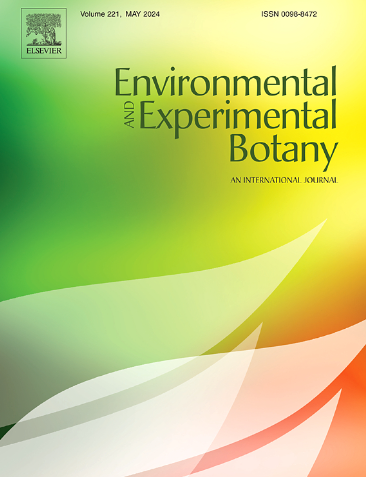草食诱导的鹰嘴豆植物挥发性有机化合物的双重方言:对豆荚螟和卵寄生蜂的威胁作用
IF 4.7
2区 生物学
Q2 ENVIRONMENTAL SCIENCES
引用次数: 0
摘要
植物在受到食草动物攻击时释放的挥发性有机化合物(VOCs)在间接诱导抗性中起着关键作用,被称为食草动物诱导植物挥发物(HI-pVOCs)。植物利用这些挥发物来击退食草动物或吸引天敌。然而,由于对高挥发性有机化合物机制的了解有限,阻碍了植物挥发物在有害生物防治策略中的进一步研究和应用。本研究分析了染虫和未染虫对鹰嘴豆幼苗挥发性特征的影响。在受侵染的幼苗中共检测到27种挥发性化合物,其中包括11种碳氢化合物,而在健康幼苗中仅检测到16种含有3种碳氢化合物的化合物。在2021 - 2022年冬季,从受侵染的鹰嘴豆剖面中选取8种挥发物,在田间条件下对豆荚螟进行了防治评价。在播后第35天和第45天叶面施用500 ppm的合成二代烷和唑烯可显著降低幼虫数量41.18 ~ 44.11 %,降低荚果伤害26.37 ~ 26.89 %。此外,在实验室条件下,浓度为500 ppm的二十烷和十八烷增强了卵寄生蜂赤眼蜂的觅食活性。这些发现表明,二十烷是一种很有前途的挥发性化合物,可用于管理鹰嘴豆荚虫,同时也支持其天然卵寄生蜂的活性。本文章由计算机程序翻译,如有差异,请以英文原文为准。
Dual dialect of herbivore-induced chickpea plant volatile organic compounds: Roles in threat to pod borer and egg parasitoid attraction
Volatile organic compounds (VOCs) emitted by crop plants in response to herbivore attack—known as herbivore-induced plant volatiles (HI-pVOCs)—play a key role in indirect inducible resistance. These volatiles are utilized by plants either to repel herbivores or to attract their natural enemies. However, a limited understanding of the mechanisms underlying HI-pVOCs has hindered further research and application of plant volatiles in pest management strategies. In the present study, volatile profiles induced by the pod borer Helicoverpa armigera were analyzed in both infested and uninfested chickpea seedlings. A total of 27 volatile compounds, including 11 hydrocarbons, were detected in infested seedlings, whereas only 16 compounds with three hydrocarbons were identified in healthy seedlings. Eight volatiles from the infested chickpea profile were selected and evaluated under field conditions against the pod borer during the winter season of 2021–22. Foliar application of synthetic eicosane and azulene at 500 ppm on the 35th and 45th days after sowing significantly reduced larval populations by 41.18–44.11 %, and pod damage by 26.37–26.89 %. Additionally, eicosane and octadecane at 500 ppm enhanced the foraging activity of the egg parasitoid Trichogramma chilonis under laboratory conditions. These findings suggest that eicosane, in particular, is a promising volatile compound for the management of chickpea pod borer, while also supporting the activity of its natural egg parasitoid.
求助全文
通过发布文献求助,成功后即可免费获取论文全文。
去求助
来源期刊

Environmental and Experimental Botany
环境科学-环境科学
CiteScore
9.30
自引率
5.30%
发文量
342
审稿时长
26 days
期刊介绍:
Environmental and Experimental Botany (EEB) publishes research papers on the physical, chemical, biological, molecular mechanisms and processes involved in the responses of plants to their environment.
In addition to research papers, the journal includes review articles. Submission is in agreement with the Editors-in-Chief.
The Journal also publishes special issues which are built by invited guest editors and are related to the main themes of EEB.
The areas covered by the Journal include:
(1) Responses of plants to heavy metals and pollutants
(2) Plant/water interactions (salinity, drought, flooding)
(3) Responses of plants to radiations ranging from UV-B to infrared
(4) Plant/atmosphere relations (ozone, CO2 , temperature)
(5) Global change impacts on plant ecophysiology
(6) Biotic interactions involving environmental factors.
 求助内容:
求助内容: 应助结果提醒方式:
应助结果提醒方式:


